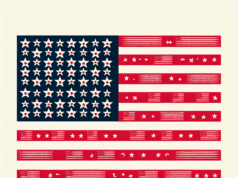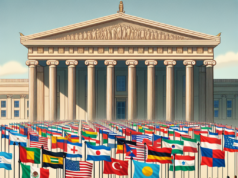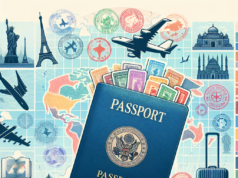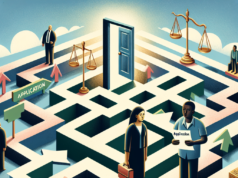
In recent months, the United States has witnessed a significant transformation in its immigration policies, prompting widespread discussion and concern among citizens, lawmakers, and advocacy groups alike. These changes, which reflect a broader shift in the national approach to immigration, have far-reaching implications that touch on economic, social, and legal dimensions. As the nation grapples with these developments, it is crucial to understand the historical context, the specific changes being implemented, and the potential consequences for American society as a whole.
Understanding the Historical Context of Immigration Policies in the United States
The history of immigration policy in the United States is marked by a series of evolving laws and regulations that reflect the nation’s changing attitudes toward newcomers. From the Chinese Exclusion Act of 1882, which targeted specific ethnic groups, to the Immigration and Nationality Act of 1965, which aimed to eliminate discriminatory quotas, U.S. immigration policy has often mirrored the socio-political climate of the times. In recent decades, policies have oscillated between periods of openness and restriction, influenced by economic conditions, national security concerns, and humanitarian considerations. Understanding this historical backdrop is essential for grasping the current shifts in immigration policy, as they are often rooted in longstanding debates about identity, belonging, and the role of immigrants in American society.
Key Changes in Immigration Policies: What You Need to Know
Recent changes to immigration policies have introduced a range of new regulations that affect various aspects of the immigration process. Notably, the Biden administration has sought to reverse many of the restrictive measures implemented by the previous administration, including efforts to streamline the asylum process and reinstate protections for Deferred Action for Childhood Arrivals (DACA) recipients. Additionally, new measures have been introduced to address the backlog in visa processing and to enhance pathways for legal immigration. However, these changes have also been met with pushback from certain states and political factions, leading to a complex and often contentious landscape. It is essential for individuals and families affected by these policies to stay informed about the specific changes that may impact their immigration status and opportunities.
The Economic Implications of Recent Immigration Policy Shifts
The economic ramifications of the recent immigration policy shifts are profound and multifaceted. Immigrants have historically played a crucial role in the U.S. economy, contributing to labor markets, innovation, and entrepreneurship. By easing restrictions and expanding pathways for legal immigration, the current policies aim to address labor shortages in key sectors such as agriculture, technology, and healthcare. However, critics argue that an influx of immigrants could exacerbate competition for jobs and strain public resources. The economic implications are further complicated by the ongoing recovery from the COVID-19 pandemic, which has reshaped labor dynamics and highlighted the essential roles that immigrants play in various industries. As the nation navigates these changes, the balance between economic growth and social stability remains a critical concern.
Social and Cultural Effects of Evolving Immigration Regulations
The evolving immigration regulations are not only reshaping the legal landscape but also influencing the social and cultural fabric of American society. As communities become more diverse through increased immigration, there is a growing recognition of the contributions that immigrants make to cultural enrichment, innovation, and community development. However, these changes can also lead to tensions and challenges related to integration, identity, and social cohesion. The rise of anti-immigrant sentiment in some quarters has sparked debates about national identity and the values that define the United States. As the nation grapples with these cultural shifts, fostering dialogue and understanding among diverse communities will be essential for promoting social harmony and inclusivity.
Legal Challenges and Controversies Surrounding New Immigration Policies
The recent changes in immigration policies have not been without controversy, leading to a wave of legal challenges from various stakeholders. Advocacy groups, state governments, and even individual citizens have raised concerns about the constitutionality and fairness of certain measures. For instance, lawsuits have been filed against the administration’s attempts to expand asylum eligibility and to reinstate protections for undocumented immigrants. These legal battles highlight the contentious nature of immigration policy in the U.S., where differing interpretations of the law and competing interests often collide. As courts weigh in on these issues, the outcomes will have significant implications for the future of immigration policy and the rights of immigrants in the country.
Looking Ahead: The Future of Immigration Policy and Its Broader Impact
As the United States moves forward, the future of immigration policy remains uncertain, shaped by ongoing political debates, economic needs, and social dynamics. The current administration’s approach suggests a willingness to embrace a more inclusive immigration framework, but resistance from various political factions may hinder progress. Additionally, the impact of global events, such as conflicts and climate change, will continue to influence migration patterns and the need for responsive policies. Ultimately, the trajectory of U.S. immigration policy will not only affect the lives of millions of immigrants but will also shape the nation’s identity, economy, and social cohesion for generations to come.
In conclusion, the recent shifts in immigration policy represent a pivotal moment in the ongoing narrative of the United States as a nation of immigrants. As these changes unfold, it is imperative for all stakeholders—government officials, community leaders, and citizens—to engage in constructive dialogue and to consider the broader implications of immigration on society. By fostering an environment of understanding and collaboration, the nation can navigate the complexities of immigration policy while honoring its foundational values of diversity and inclusion.


























